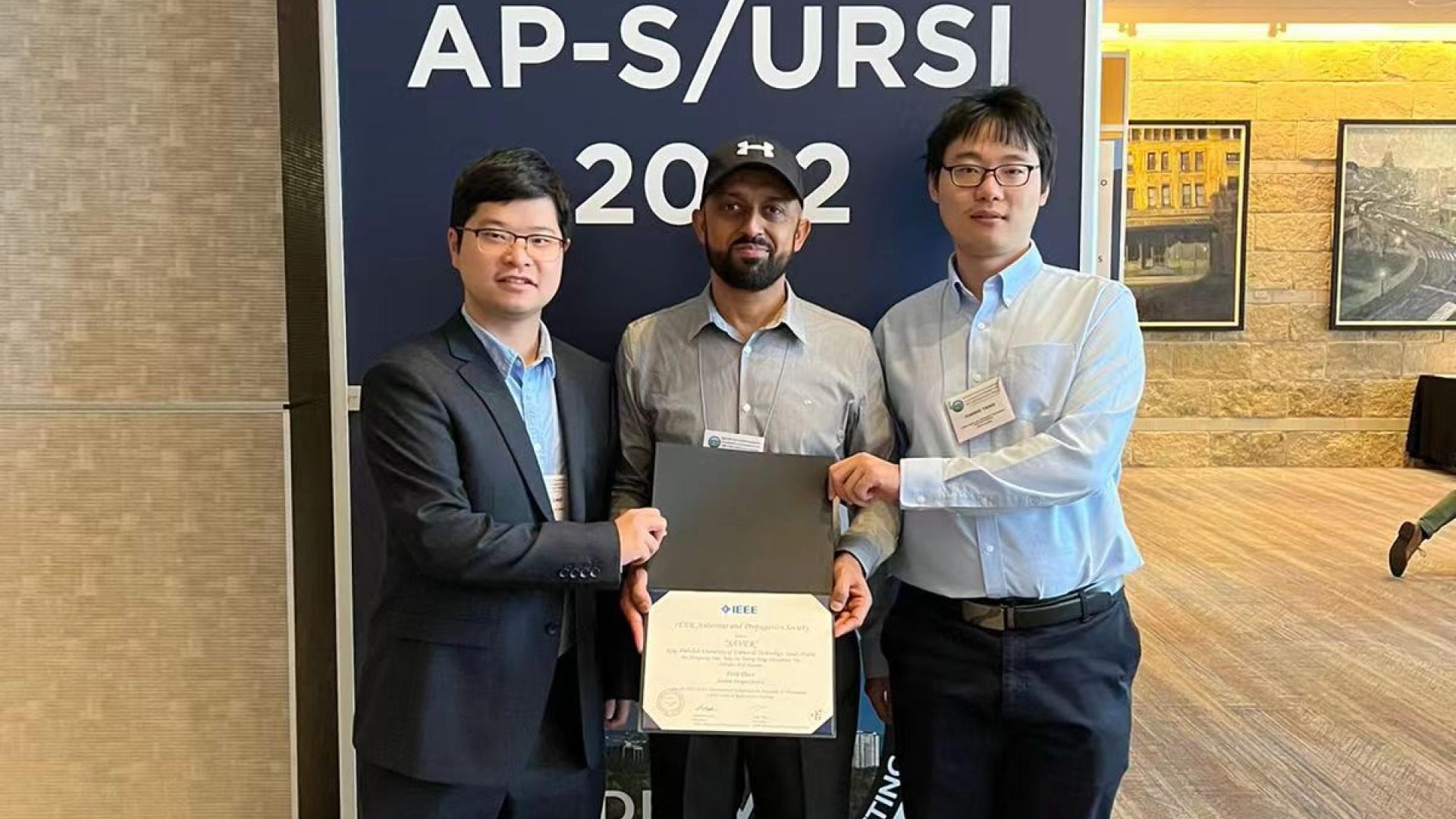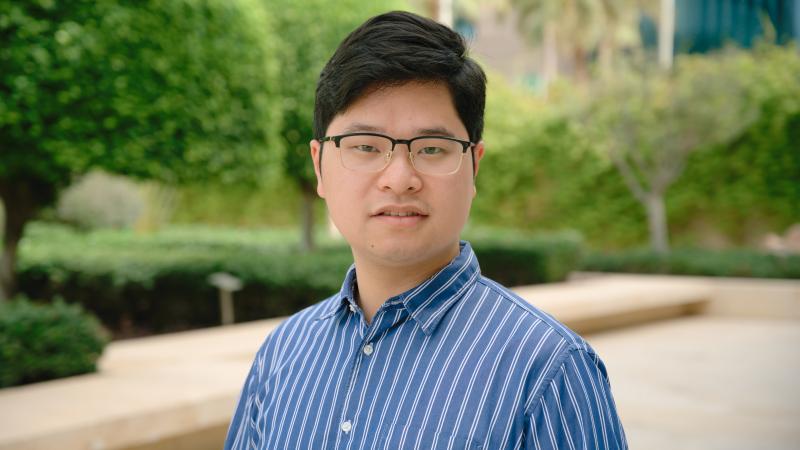By David Murphy
Two KAUST Ph.D. students—Hanguang Liao and Yiming Yang from the KAUST Integrated Microwave Packaging Antennas & Circuit Technology (IMPACT) Lab (PI Professor Atif Shamim), in collaboration with two remote visiting IMPACT students, Yuke Li, KU Leuven, Belgium, and Zhengliang Yao, University of Electronic Science and Technology of China, China—won first place in the 2022 IEEE AP-S Student Design Contest at the 2022 IEEE International Symposium on Antennas and Propagation and USNC-URSI Radio Science Meeting (IEEE AP-S/URSI 2022), held from July 10 to 15, in Denver, U.S.
Competing under the team name "SAVER," the students’ entry was announced as the overall winner in the design contest from an initial pool of 30 submissions. Of their award win, Liao said: “It is a great privilege to be recognized in the AP-S' highest student team competition. We want to thank our advisor Professor Shamim and all of our IMPACT Lab colleagues who have helped us in our research over the years.”
“I am delighted to receive the first prize and to be acknowledged by the AP-S. All the hard work of the past six months has paid off, and I feel grateful for the perseverance of my teammates and the support of my colleagues at KAUST,” Yang added.
LifeSAVER
Participating under the competition theme “Miniaturized Antennas in IoT Applications,” Liao, Yang, Li and Yao’s submission described their life-saving wearable device, Small Antenna for Vital Emergency Response, or SAVER. With a dual-purpose design taking inspiration from LEGO bricks and their ability to be shaped into diverse shapes and models, SAVER provides real-time emergency assistance and monitoring while doubling as an educational tool for antenna miniaturization techniques.
“LEGO inspired us to build antennas using specially designed blocks, and this concept is further extended to teaching antenna miniaturization through block-building. We hope that SAVER can benefit teachers to deliver antenna knowledge to students and, more importantly, save someone’s life,” Yang explained.
“Although not wishing that anyone should encounter a life-or-death emergency, we firmly believe that vulnerable people—for example, the elderly, extreme sports athletes and construction workers—could use SAVER to monitor their vital signs and report accidents and emergencies in a speedy, and hopefully life-saving fashion,” Liao concluded.



